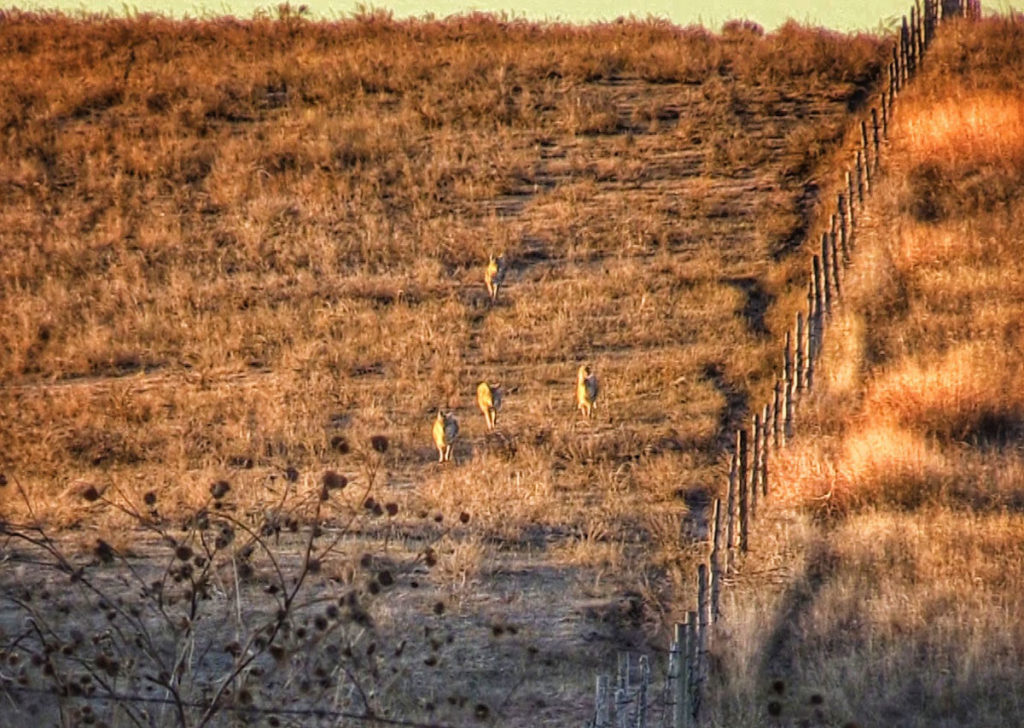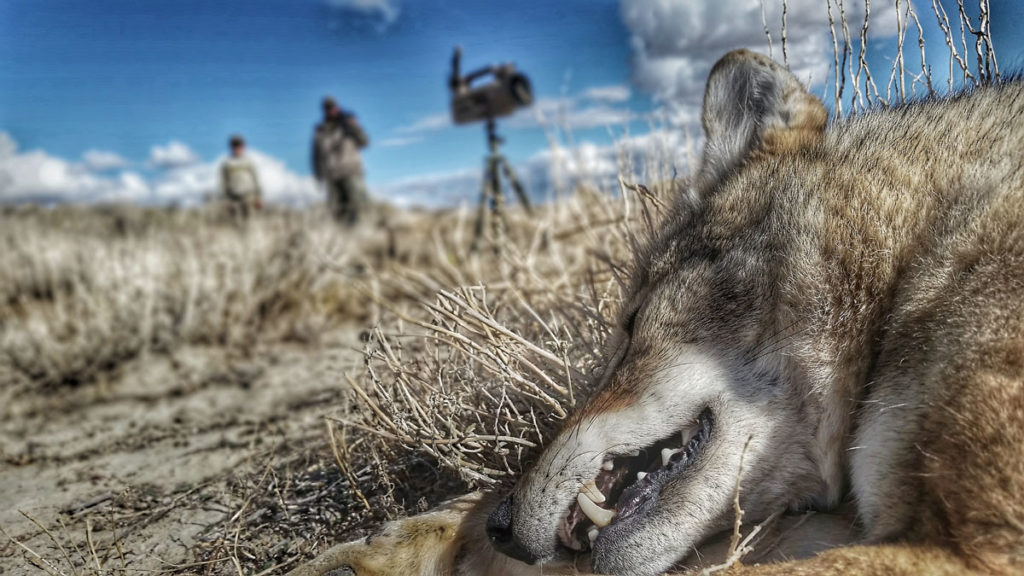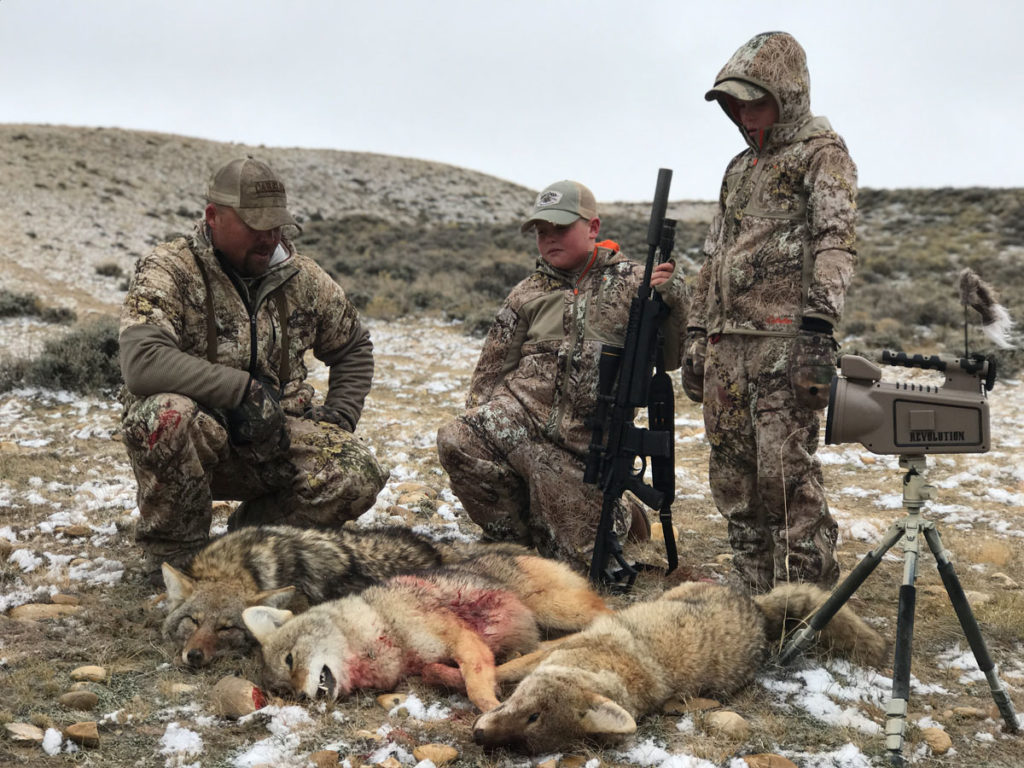
If you’re reading this, there’s a good chance October is your favorite month of the year. The temps are dropping, football is in full swing and hunting seasons are opening up all over the country! Whether it’s chasing bugling bulls in the high country, stalking speed goats on the prairie, or waiting on a whitetail to pass under your tree, October is full of prime opportunities in the hunting world. Although calling coyotes may not be high on the priority list of most hunters in October, taking advantage of primetime conditions during the early months of fall can lead to some of the best coyote-calling action of the season! Throughout this article, I’ll discuss the coyote life-cycle and how it relates to early season calling, the relationship between coyote populations and hunting pressure throughout the year, and how these coyote characteristics affect the early season approach to calling coyotes.
The Coyote Life-Cycle
In order to understand why coyote hunting opportunities are normally the best during early fall, we must take a look at the specific section of the coyote life-cycle from April to October. Most coyote pups are born across the country around the 1st part of April. Although only a certain percentage of the remaining coyote population in late winter is of breeding age, the coyotes that do pair up and breed have the unique ability to populate the landscape with large litters of pups when the conditions are right. Due to this adaptation, the general coyote population can double or triple within the first few weeks of April. At this point, the general population of coyotes will be at the highest point of the year. From this point forward, the overall population of coyotes will decrease at variable rates throughout the year until a new crop of coyotes is born the following April. As coyote hunters, we are not so much concerned about the highest population of coyotes but the highest population of callable coyotes. Each season, depending on a variety of factors, coyote pups may account for 50-70% of the coyotes in that area. These coyote pups don’t become callable coyotes until they are old enough to hunt and sustain life on their own. This transition normally takes place in October when the coyote pups reach 6 months of age.

This example will help illustrate the point. Let’s say in February you have 30 coyotes in an area and 8 of the females pair up and breed. In April, those 8 females give birth to 70 coyote pups. At this point, the overall coyote population is 100 but only 30 of those are actual callable coyotes due to age. Throughout the summer months, 15 of the coyote pups and 5 adult coyotes die from various causes. By the first of October, there are now 80 coyotes in the area in which 25 are adults and 55 are young adults. The 55 young adults are now old enough to hunt and sustain life on their own. If you were to go coyote hunting in this area in August or early September, there would only be 25 callable coyotes at your disposal. If you were to go coyote hunting in this area in October, you would now have 80 callable coyotes at your disposal! Now keep in mind that this is a very simplified example to illustrate the point. In reality, there are many more factors that would influence the population during this time frame such as carrying capacity of the habitat, disease, drought, influx of new coyotes moving into the area, summer hunting pressure, etc.

Hunting Pressure
One other major factor that helps make October the best month to call coyotes is hunting pressure or the lack thereof. Generally speaking, coyotes receive very little hunting pressure over the summer and early fall months. Hot weather, tall vegetation, standing crops, biting bugs, and the absence of prime fur are just a handful of reasons why many coyote hunters elect to put their efforts on hold. As various hunting seasons start to open, pressure slowly increases as coyotes are taken primarily as targets of opportunity. This pressure will steadily build throughout the fall until it maxes out during the winter months when coyote hunters are out in full force. As the pressure on coyotes is increased, the ability to call those same coyotes is decreased. This increase in pressure essentially makes calling coyotes more difficult later in the season because the population of callable coyotes is on a fast decline. This decline is due to both mortality and pressure. By taking into consideration the sudden spike in the population of callable coyotes and the fact that hunting pressure is still minimal, you can begin to see why October can be the best month to call coyotes!

The Approach
With a large population of callable coyotes scattered across the landscape, the odds are heavily in your favor that your setup will be within an earshot of one of these coyotes. However, this is only the beginning if you plan to capitalize on this opportunity. I could discuss important elements like getting into your stand undetected or setting up properly to give yourself the best chance of killing the approaching coyote. But for this article, let’s focus on sound selections. From earlier in the article, we know that a majority of the coyotes in October are 6 months old. These young adults now have to feed themselves and with the weather changes brought on by fall, many of the easy food sources they have relied on are gone. These young coyotes have spent the last 6 months in a family group environment. But as time passes, many of them will scatter across the countryside in search of their own territory. These young coyotes will join the ranks of the transient coyote population. Some of the adult coyotes have also spent the last 6 months in these family groups and are now converting back to their solitary ways. When figuring out a sound sequence for early season, it’s important to key on 3 areas. First, a large percentage of the coyote population is being forced to hunt a more calorie-rich diet of small mammals. Second, a large percentage of the coyote population has spent the last 6 months in a family group environment. Third, a large percentage of the coyote population consists of young adult coyotes transitioning across the landscape. With these 3 things in mind, settling in on a sound sequence that is heavy on prey distress and coyote-pup distress is optimal. Keeping the general feel for the sequence on the nonaggressive side for the early part of the stand is also important. For example, start the stand off with a rodent, bird or rabbit distress sound. After giving the prey distress sound a chance to produce a hunger response, move into a pup distress sound in hopes of triggering a response from a coyote more interested in coming to the rescue of their littermate or their pup. If the sequence fails to produce a coyote up to this point, move to a more aggressive sound like coyote fights or coyote vocals. This will occasionally produce an older, pressured coyote that got an early start on an education.
Throughout this article, I’ve discussed the coyote life-cycle and how it relates to early season calling, the relationship between coyote populations and hunting pressure throughout the year, and how these coyote characteristics affect the early season approach to calling coyotes. All of these variables play an important role in why calling coyotes in October can be some of the best action a hunter will experience all season. There’s no such thing as a bad time to call coyotes. But if you really want to set yourself up for a chance at an incredible hunt, calling coyotes during primetime conditions in October is your best bet!